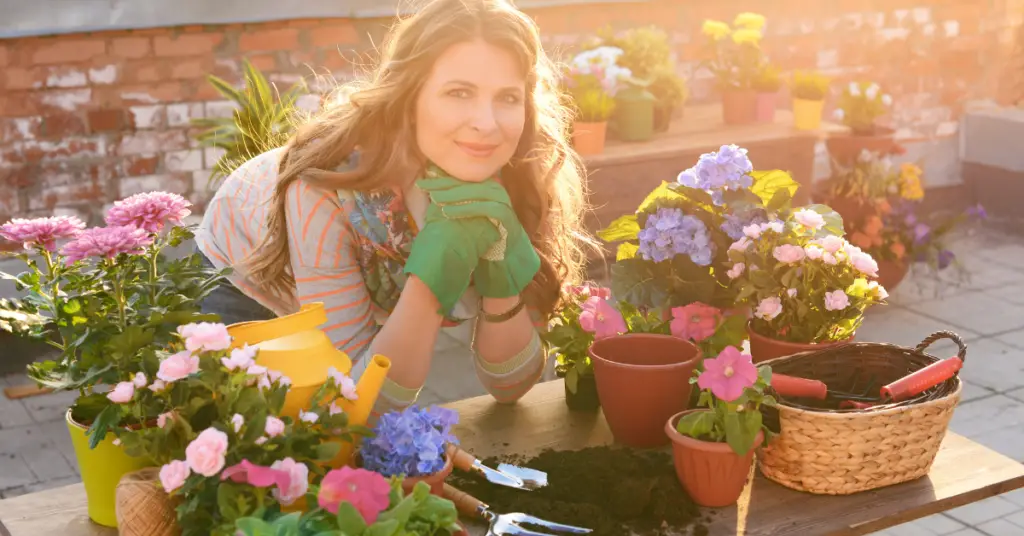As whimsical as it may seem, a rooftop garden is a surprisingly powerful weapon against global warming. Green roofs, also known as living roofs oreco-roofs, are the wave of the future in sustainable building design.
They have a myriad of benefits including reducing CO2 gases, cooling structures and their surroundings, providing insulation, and slowing storm-water runoff. Their resulting energy savings also means less fossil fuel use and less reliance on foreign oil. I
f a rooftop garden can help save the world, let’s get planting! Simple and elaborate green roofs are sprouting all over today, from Vancouver, Canada, where condo dwellers share rooftop community garden plots, to Chicago, Portland, Seattle, and Maryland where businesses and homeowners take advantage of government tax incentives and assistance programs for planting living roofs.
The California Academy of Sciences building in Golden Gate Park, San Francisco features a huge green vegetated roof on a sloped surface, which is designed to harness the wind’s energy to help control the building’s interior temperature. BP America has included a green roof on topof its pilot green gas station project called “Helios House” in Los Angeles.
In an effort to help mitigate global warming, here are the top reasons to install a rooftop garden:
Eco-roofs help moderate city temperatures which in turn, helps lessen fossil fuel energy use. Humidity caused by the evapo transpiration (evaporation of soil moisture caused by heat), which occurs on greenroofs, cools the surrounding air and lowers the temperature.
The website www.gardens.com reports, “Increasing green space in Los Angeles by 5 percent could lower summer temperatures by 4 degrees.” Additionally,“those lower temperatures would decrease smog by 10 percent and save $175 million in energy costs.
”Green roofs insulate buildings, keeping them cooler in summer and warmer in winter, thereby reducing carbon emissions from the fossil fuels used in cooling and heating. (And less energy used for heating and cooling saves you money!)
Environment Canada found that a typical one-story building with a grass roof with 3.9 inches of growth resulted in a 25 percent reduction in summer cooling requirements. Field experiments in Ottawa, Canada, found that a green roof with 6 inches of growth reduced heat gains by 95 percent and heat losses by 26 percent, as reported by greenroofs.org.
As is true for all plants, green roofs absorb large amounts of CO2 through photosynthesis. In cities where there isn’t a lot of room for planting, this is especially important. And the more plants we have to help offset the deficit of CO2 absorption created by deforestation, the better.
In addition to processing CO2 into oxygen, these green patches also purify the air of pollution that passes through them—a significant added benefit. According to greenroofs.org, “one square meter of grass roof can remove 0.2 kg of airborne particulate from the air every year.”
And if fighting global warming isn’t reason enough to install a green roof,consider these added benefits:
Providing an island of green in the ocean of city concrete, green roofs serve as a cool sanctuary for living creatures, including birds, bees, and butterflies. Green roofs also can serve as wildlife corridors for migrating species as they pass through or over urban areas.
In addition to absorbing and reducing glare, eco-roofs are aesthetically pleasing, providing a calming, beautiful sanctuary for you and others to visit or gaze upon.
Rooftop vegetable gardens can save you money. The Fairmont Waterfront Hotel in Vancouver used its green roof to grow herbs, flowers, and vegetables and saved its kitchen an estimated $30,000 a year in food costs.
Green roofs naturally absorb water—typically 50-60 percent of the annual runoff volume—thereby helping to divert excess storm waterfrom flowing untreated into rivers and lakes. As the sod can retain 90-100 percent of the first hour of heavy rainfall that can overwhelm storm-water management systems, this can also assist storm-water management and help in flood control.
Green roofs trap and filter particles and pollutants from entering stormwater, which also helps protect the marine environment. Rooftop gardens provide sound insulation from traffic and airplanes.
Eco-roofs last considerably longer than typical roofs. The average greenroof will last for 40 years, as opposed to standard roofing materials like cedar shake that has a 17-year expectancy, according topomegranate.com.
But before you head up to your roof with a plant in one hand and a bag of top soil in the other, know that planting a green roof requires careful planning. Local climate factors like wind, sunlight, shade, average temperatures, and rainfall need to be taken into consideration.
To protect your building in the long run, you will need to plan the irrigation, drainage, and plant anchoring intelligently. The organization Green Roofs for Healthy Cities offers classes around the country for professionally installing green roofs. Visit their website for more information.
Europe is leading the way with over 100 million square feet of green roofs. Let’s follow suit! In addition to taking us a significant step closer to carbon neutrality, the growth of rooftop gardening will make a much greener and more beautiful place to live.

Erzsebet Frey (Eli Frey) is an ecologist and online entrepreneur with a Master of Science in Ecology from the University of Belgrade. Originally from Serbia, she has lived in Sri Lanka since 2017. Eli has worked internationally in countries like Oman, Brazil, Germany, and Sri Lanka. In 2018, she expanded into SEO and blogging, completing courses from UC Davis and Edinburgh. Eli has founded multiple websites focused on biology, ecology, environmental science, sustainable and simple living, and outdoor activities. She enjoys creating nature and simple living videos on YouTube and participates in speleology, diving, and hiking.

